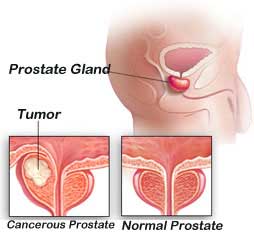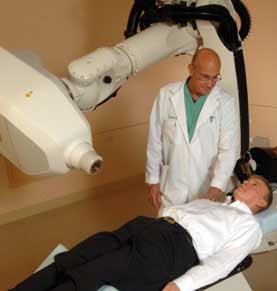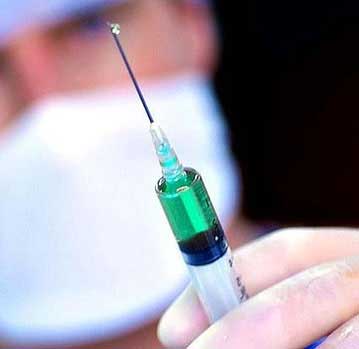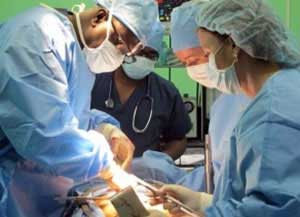Prostate Cancer and Erectile Dysfunction

The incapability to reach or maintain an erection to perform sexual intercourse is known as impotency or erectile dysfunction.
Although erectile dysfunction may or may not occur due to prostate cancer, following treatment procedures for the disease can cause the problem:
-
Radiation therapy, whether by external beam or radioactive seed implants
-
Removal of the entire prostate gland by surgery
-
Hormone therapy
Impotence may occur sooner than others by different treatment techniques.
Occurrence of Erectile Dysfunction after treatment
Surgery
Erectile dysfunction may occur right after surgery to remove the prostate, regardless of the fact that the surgical technique is performed that by sparing the nerve that controls erection.
Erectile dysfunction may attain its severity depending upon the type of surgical technique, stage of cancer, or skill of the surgeon.
Recovery from erectile dysfunction may occur within the first year following the nerve-sparing technique. Though unlikely, still Erectile function recovery after a non-nerve-sparing surgery is possible.
Reported data revealed 66% erectile dysfunction rate in case of nerve-sparing prostatectomy as compared to 75% for non-nerve sparing surgery within a year of surgery. Application of erectile dysfunction drug or vacuum devices after the healing of the body from surgery may improve the quality of erections and rapid return of normal sexual function.
One does not lose the ability to have an orgasm if erection is achieved after surgery, however, orgasm may be "dry" wherein little (if any) ejaculate is produced. This may result in infertility, although most men are diagnosed with prostate cancer at old ages. If desired, the patient could refer to the doctor regarding sperm "banking" prior to the procedure.

Radiation therapy
Erectile dysfunction usually begins gradually following radiation therapy within about six months of the treatment.
Radiation therapy has some common complications associated with it, including Erectile dysfunction, however, its occurrence may decrease with the application of more sophisticated treatments, such as intensity-modulated radiotherapy (IMRT), radioactive seed implants (brachytherapy), or 3-D conformal radiotherapy.
Hormone therapy
Erectile dysfunction desire may occur approximately two to four weeks following hormone therapy, which is due to the testosterone-reducing action of the drugs.
How Is Erectile Dysfunction Treated?

Current treatment procedures for ED for patients who have undergone treatment for prostate cancer include:
-
Oral medications, such as Levitra, Cialis, Stendra, Staxyn, or Viagra
-
Intracavernous injection therapy myself, i.e. injections of drugs into the penis prior to intercourse
-
Application of a vacuum constriction device to draw blood into the penis to generate an erection
Effectiveness of Orally administered Erectile Dysfunction Drugs
Although the mechanism of action is similar, oral drugs such as Viagra, Levitra and Cialis has little differences in the chemical makeup. These minor variations affect the way of function of the medications, such as how quickly it may start its effect and wears off.
| Levitra, Viagra, | Cialis (daily in small doses | Cialis (1 ½ days) | |
| Way of intake | Not more than once a day without food | Once a day with or without food | Once a day with or without food |
| Time of intake | Near about 30-60 min prior to sex | Anytime | 30 minutes prior to sex |
| Effectiveness | Up to 5 hours approximately | Anytime in between doses | Up to 1 ½ days |
Effectiveness of Hormone therapy
Hormone therapy can benefit men having erectile dysfunction for low hormone levels. Hormone therapy drugs commonly prescribed for treatment of erectile dysfunction are:
-
Depo-Testosterone (testosterone cypionate)
-
Delatestryl (testosterone enanthate)
-
Testosterone replacement raises man's sexual desire, thereby improving erectile dysfunction. This therapy is generally not recommended for patients having testosterone levels at the lower of the normal range.

Effective Is Injection Therapy With Each Type of Treatment?
Injections into the penis can be an effective treatment procedure in case drugs for oral erectile dysfunction fail for patients who underwent surgery or have received radiation therapy for prostate cancer.
Erection can be regained in approximately 60% to 80% men with the application of injection treatments. The procedure may have fewer side effects, including the development of scar tissue or occasional pain from any of the drugs applied for injection therapy.
Further Erectile Dysfunction Therapies
If oral drugs and injection therapy fail patient may opt for other treatment techniques. Some of them are discussed below.
Vacuum constriction device
A penis pump or a vacuum pump is a device with a hollow tube that can be kept over the penis. A pump is used to draw blood into the penis that creates an erection. This is a hand- or battery-powered device which quite easy to operate and associated with low risk of problems. If this device is a suitable treatment for the sufferer then his doctor may recommend a specific model by which the patient can make sure that it is approved by the Food and Drug Administration (FDA), suits the need, and manufactured by a reputable organization. Vacuum-constriction devices that are available in some magazines and sex ads may not be safe or effective for use.
Penile suppositories
In this treatment procedure, a suppository is placed into the urethra (urinary tube) with the help of a plastic applicator. The drug alprostadil that relaxes muscle of the erection chamber, thereby permitting blood flow into the penis is present in the suppository that travels to the erection chamber. But only 30% of men have been found to respond to this technique.

Penile implants
This technique is applicable if the patient did not recover from erectile dysfunction within a year of cancer treatment and at the same time nonsurgical techniques have failed or was unacceptable. Penile implant, or prosthesis, is quite an effective therapy to treat erectile dysfunction in many men, but does require surgery to place the implant into the penis. Semirigid or expansive penile implants are safe and effective treatment technique for many men with erectile dysfunction. It has some disadvantages since surgical procedures can cause infection or mechanical failure, which may require re-operation and removal of the prosthesis. However, some men and their partners are quite satisfied with these techniques and the rate of success is almost 95%.
| Copyright © 2024 www.edtreatmentindia.com All Rights Reserved. |










